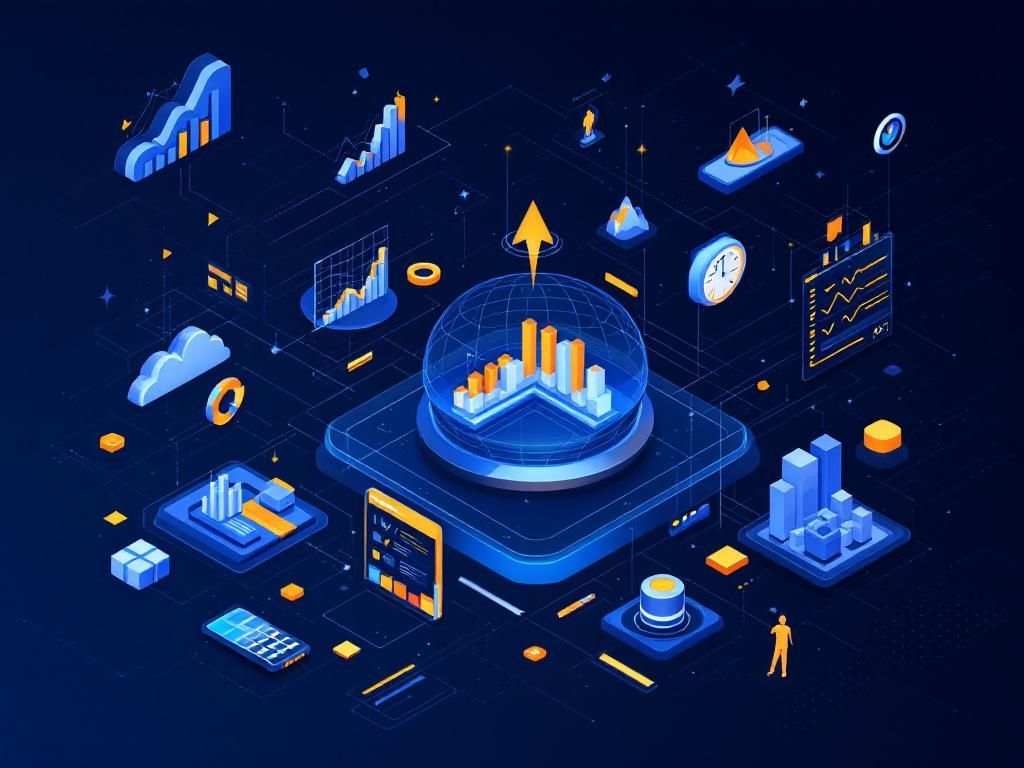In a world where consumer preferences are constantly evolving, retail businesses are faced with the challenge of staying ahead of the curve. One of the most powerful tools at their disposal is predictive analytics. This cutting-edge technology leverages data to forecast future trends, optimize operations, and enhance customer experiences. By harnessing the power of predictive analytics, retailers can transform raw data into actionable insights that drive profitability and growth.
Understanding Predictive Analytics
Predictive analytics involves the use of statistical algorithms and machine learning techniques to identify the likelihood of future outcomes based on historical data. It encompasses a range of tools and methods that allow businesses to analyze patterns and trends within their data. Here are some key aspects of predictive analytics:
- Data Collection: Gathering data from various sources, including sales transactions, customer interactions, and external market research.
- Data Analysis: Utilizing statistical methods to discern patterns and correlations within the data.
- Modeling: Creating predictive models that are tested for accuracy and reliability.
- Implementation: Applying insights gained from the models to make informed business decisions.
The Importance of Predictive Analytics in Retail
In the competitive landscape of retail, companies must deploy strategies that not only attract customers but also retain them. Predictive analytics plays a crucial role in achieving this by providing insights that can lead to better decision-making.
Enhancing Customer Experience
One of the primary applications of predictive analytics is in enhancing the customer experience. Retailers can utilize predictive analytics to:
- Personalize Marketing Efforts: By analyzing customer data, retailers can create targeted marketing campaigns that resonate with individual preferences.
- Optimize Pricing Strategies: Predictive analytics helps in understanding how pricing changes affect sales, allowing for dynamic pricing models.
- Improve Inventory Management: Retailers can predict which products will be in demand and adjust stock levels accordingly, reducing understock and overstock scenarios.
Increasing Operational Efficiency
Operational efficiency can also be significantly boosted through the use of predictive analytics. By forecasting demand and understanding market trends, retailers can streamline their operations:
| Benefit | Description |
|---|---|
| Reduced Waste | By predicting demand accurately, businesses can minimize excess inventory, thus reducing waste and associated costs. |
| Enhanced Supply Chain Management | Predictive analytics can optimize supply chain logistics by anticipating demand fluctuations and adjusting resources accordingly. |
Implementing Predictive Analytics in Retail
To successfully implement predictive analytics, retailers must follow a structured approach that includes:
1. Data Strategy Development
Establish a clear data strategy that outlines what data will be collected, how it will be used, and who will have access to it.
2. Technology Selection
Choose the right tools and technologies to support predictive analytics, including data management systems, analytics platforms, and machine learning frameworks.
3. Data Quality Assurance
Ensure that the data being collected is accurate, complete, and relevant to the business goals.
4. Model Development
Create and refine predictive models tailored to the specific needs of the retail organization.
5. Ongoing Monitoring and Improvement
Continuously monitor the performance of predictive models and adjust as necessary to reflect changing market conditions.
Case Studies: Success Stories in Retail
Several retailers have successfully employed predictive analytics to drive their business forward. Here are a few notable examples:
Walmart
Walmart utilizes predictive analytics to optimize its inventory in real-time. By analyzing purchasing trends, they can ensure the right products are available at the right times, leading to increased sales and customer satisfaction.
Target
Target’s use of predictive analytics extends into personalized marketing. By analyzing customer shopping behavior, they can tailor marketing to individual preferences, resulting in higher engagement rates.
Challenges in Predictive Analytics
While the advantages of predictive analytics are clear, retailers may face challenges in its implementation:
- Data Privacy Concerns: With growing concerns about consumer data privacy, retailers must navigate regulations while still leveraging data for insights.
- Integration Issues: Integrating predictive analytics into existing systems can be complex and may require significant resources.
- Skill Gaps: Finding skilled professionals who can analyze data and build predictive models can be a challenge.
The Future of Predictive Analytics in Retail
As technology continues to evolve, the future of predictive analytics in retail looks promising. Emerging trends include:
1. Increased Automation
Automation of data collection and analysis processes will allow retailers to gain insights faster and make more informed decisions.
2. Enhanced AI Capabilities
Artificial intelligence (AI) will play a crucial role in improving predictive analytics, enabling more complex modeling and deeper insights.
3. Greater Personalization
As predictive analytics evolves, retailers will be able to offer even more personalized shopping experiences, increasing customer loyalty and retention.
Conclusion
In summary, predictive analytics is a vital tool for retailers aiming to enhance their success in a highly competitive industry. By making informed decisions based on data-driven insights, retailers can improve customer experiences, increase operational efficiencies, and drive overall growth. As we look to the future, the potential applications of predictive analytics will continue to expand, providing retailers with even more opportunities for innovation and success.
FAQ
What is predictive analytics in retail?
Predictive analytics in retail refers to the use of statistical algorithms and machine learning techniques to identify the likelihood of future outcomes based on historical data. It helps retailers forecast trends, optimize inventory, and enhance customer experiences.
How can predictive analytics improve inventory management?
Predictive analytics can improve inventory management by forecasting demand, identifying slow-moving products, and suggesting optimal stock levels. This helps retailers reduce excess inventory costs and avoid stockouts.
What are the key benefits of using predictive analytics in retail?
Key benefits of using predictive analytics in retail include improved decision-making, enhanced customer personalization, increased sales and revenue, reduced operational costs, and better risk management.
How does predictive analytics enhance customer experience?
Predictive analytics enhances customer experience by analyzing shopping behavior to deliver personalized recommendations, targeted promotions, and tailored marketing strategies that resonate with individual customers.
Can small retailers benefit from predictive analytics?
Yes, small retailers can benefit from predictive analytics by leveraging affordable tools and platforms that provide insights into customer behavior, sales trends, and inventory management, enabling them to compete more effectively.
What tools are commonly used for predictive analytics in retail?
Common tools used for predictive analytics in retail include data visualization software, customer relationship management (CRM) systems, data mining tools, and machine learning platforms such as R, Python, and various cloud-based solutions.




